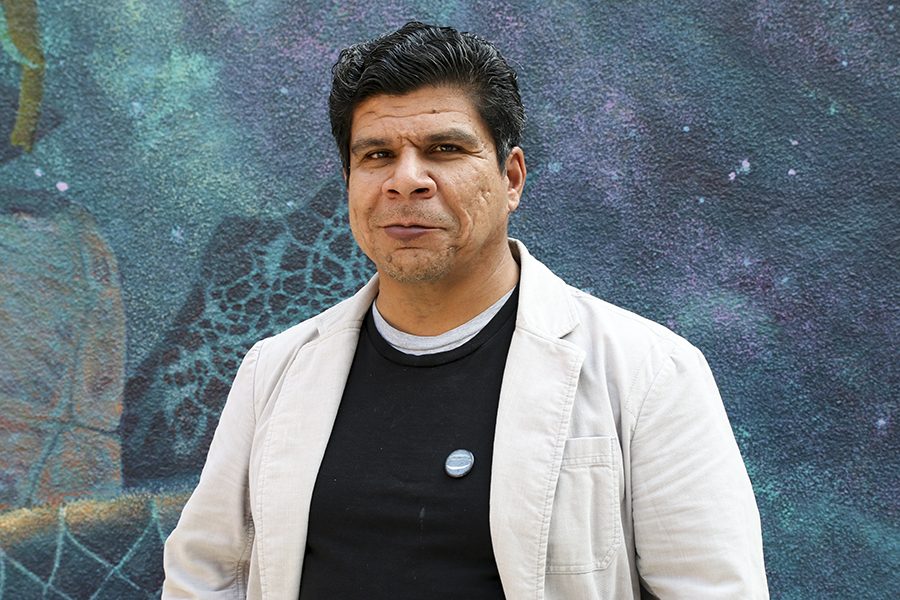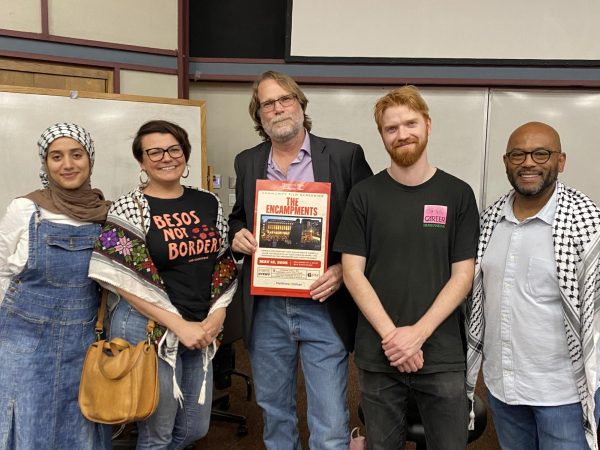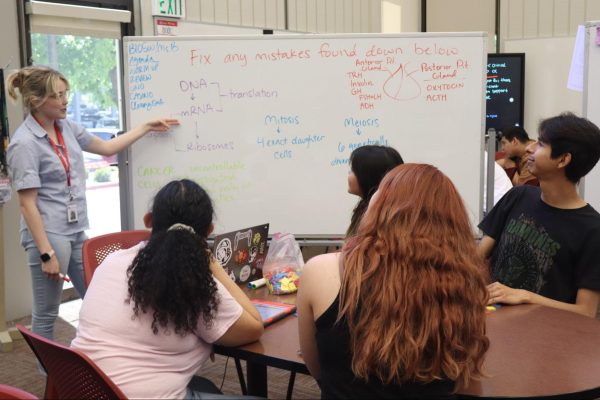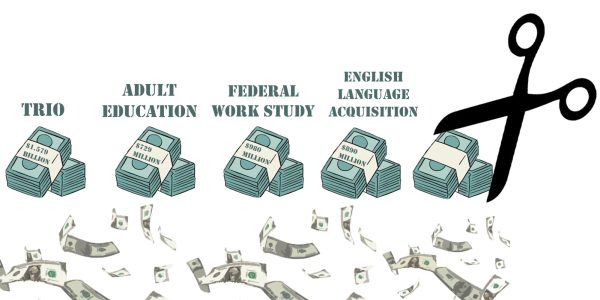Posing Social Commentary Through Art
A career in art wasn’t in the books for Fresno City College art instructor Ricardo Rivera, but he was drawn, magnetized, to the mystery behind it after taking his first drawing class at 24 years old.
“I was not interested in art at all; it was like a foreign language to me, and I thought it was dumb and a waste of time,” he said. “[It was] the weirdness in a way that attracted me because I find that I like things that are not necessarily the normal way of doing things.”
Rivera grew up in Courtland, California, a small town 30 minutes from Sacramento, with an estimated 250 people at the time. Common themes in his works include social justice, discrimination, and classism — inspired from his experience with racism and the difficulty growing up as a minority [Mexican-American].
“As artists, we are not necessarily going to solve it, but we could bring attention to it rather than sweep it under the rug,” he said. “That’s one thing that artists do, not necessarily create solutions, but create situations where they expose a feeling an idea so that it can be talked about.”
Rivera recalls that language was the inspiration behind his earlier work. This was because of his inability to effectively communicate with his teachers as a child, he said.
“My speech pattern was different in Spanish than it is in English, so I couldn’t say s’s or r’s in English.” Rivera said. “The miscommunication between my teachers and me was really frustrating, and I think it was mostly because my teachers didn’t want to hear my intonation.”
On another project, he dressed up in a reflective suit composed of mylar. He was in a small town in Switzerland and wanted to recreate the idea of an alien crashlanding. He came down from the mountains (Alps), and made his way into town.
“What happens when I cover myself with mylar is that it reflects everything around me,” he said, “and it takes away my image, so you can still see me as a form, but you can’t tell who I am.”
He says people were fascinated when he had the suit on, but became suspicious of him when he took the suit off. He said he wanted to explore the relationship people have with outsiders, their xenophobia, and fear of difference.
“That idea of being scared of outsiders or xenophobic as opposed to if it is like Sasquatch, one is OK, but if it’s a hundred, it’s not,” Rivera said.
Rivera received a bachelor’s and master’s from the San Francisco Art Institute,and has taught at UC Berkeley, Sacramento City College, the California College of the Arts, Stanford University, City College of San Francisco, and the Community College of Rhode Island.
However, his career in art was not a linear one.
Before enrolling in college and pursuing art, he worked in the fields, and then in a warehouse. He says he decided to enroll in college after being fired from his job at the warehouse.
“I didn’t want to work in that kind of job where it was a 9 to 5 job, so that’s when I committed myself to school, and that’s when I enrolled at school at 24 years old,” Rivera said. “I didn’t want to work because it was making me hate what I did, and I wanted to live.”
He said when he enrolled, he imagined himself getting an engineering job like his parents would tell him, but eventually decided to pursue art after his friends convinced him to take a drawing class. He says the teacher walked him to the registrar office to ensure he enrolled in the class after seeing his drawings.
Coming from a Mexican-American family made pursuing art revolutionary. Rivera said his parents didn’t think he would be able to make a living out of his career. He remembers telling his parents at a Super Bowl party that he had to go home in order to do homework, and being ridiculed for it.
“I thought that was strange,” Rivera said. “I was thinking, I’m trying to do something different, something for myself, but this education is not necessarily valued over hard work and perseverance.”
As a professor, he tries to create experiences for his students where they discover art on their own.
“I don’t really ever tell students what to make art about; I want them to make art about what they know, because what I know is very different,” Rivera said. “My experiences are very different, so I want them to understand that the art has to come from them.”
He believes fostering intuition is important in the creative process.
“What art does is — give you a way to express yourself without having to do it in a verbal way, and also to share your ideas visually with other people that might have a relationship to what you’re experiencing,” Rivera said. “It’s a way to be human I think.”
Rivera says art has retained the same allure it had since his first drawing class.
“It’s a way for me to be alive, and to experience the world.” Rivera said. “When I’m walking, driving, running, I see art everywhere. I see possibilities, and I try to remember those experiences because if it catches my attention, then something like that is going to catch the audience’s attention.”






